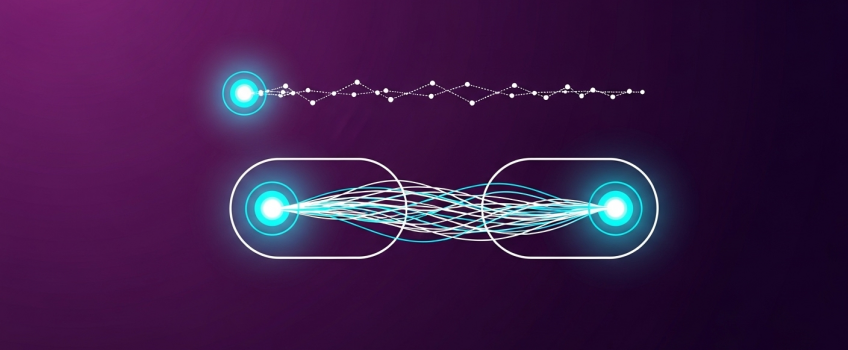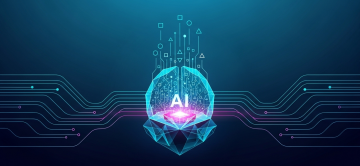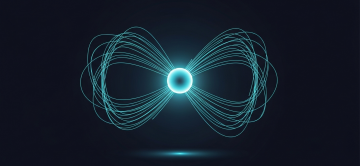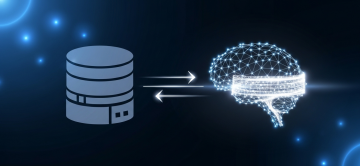A Practical Guide to CrewAI: Build Your First AI Agent

A Practical Guide to CrewAI: From Your First Agent to Complex, Collaborative Teams
At ActiveWizards, we use CrewAI to build sophisticated autonomous systems for our clients. This article serves as a practical, hands-on guide based on our deep experience. We will walk you through building your very first agent and then progressively level up to architecting a collaborative crew that can research, write, and review content. This is your blueprint for moving from simple prompts to powerful, agentic workflows.
The Core Concepts: Your AI Workforce
Before writing code, it's crucial to understand CrewAI's building blocks. Think of it as assembling a real-world project team:
- Agents: The "who." These are your team members, each with a defined
role,goal, andbackstoryto focus their expertise. - Tools: The "what they can do." These are the functions or APIs an agent can use, like a web search, a database query, or a custom function.
- Tasks: The "what they must accomplish." These are the specific assignments you give to your agents.
- Crew: The "team" itself. The Crew brings agents and tasks together and defines the process (e.g., sequential or parallel) by which they collaborate to achieve the final objective.
Your First Agent: A Simple Research Task
Let's start with the "Hello, World!" of CrewAI: building a single agent to research a topic. Our goal is to create a "Tech Researcher" that can find the latest information about a given subject using a web search tool.
Step 1: Define Your Agent and Tool
First, we'll import the necessary components and define our search tool. We then instantiate our agent, giving it a clear persona.
from crewai import Agent, Task, Crew, Process
from langchain_community.tools import DuckDuckGoSearchRun
# Define the tool the agent will use
search_tool = DuckDuckGoSearchRun()
# Create a researcher agent
researcher = Agent(
role='Senior Technology Researcher',
goal='Uncover the latest cutting-edge advancements in a specific tech topic.',
backstory=(
"You are a renowned researcher at a top-tier tech analysis firm. "
"Your expertise lies in identifying emerging trends and summarizing complex "
"technical information for a strategic audience."
),
verbose=True,
allow_delegation=False,
tools=[search_tool]
)
Step 2: Assign a Task and Form the Crew
Next, we create a specific task and assemble a one-agent crew to execute it.
# Create a task for the researcher
research_task = Task(
description='Find and summarize the latest news about the Llama 3 family of models from Meta.',
expected_output='A concise, 3-paragraph summary of the key announcements, model sizes, and performance benchmarks.',
agent=researcher
)
# Form the one-agent crew
research_crew = Crew(
agents=[researcher],
tasks=[research_task],
process=Process.sequential
)
# Kick off the work!
# result = research_crew.kickoff()
# print(result)
With just a few lines of code, you have a functional AI agent. The real power, however, is unlocked when we build a team.
Graduating to a Collaborative Crew: The Blog Post Team
Now, let's tackle a more complex problem: creating a blog post. This requires two distinct skills: research and writing. We'll build a two-agent crew to collaborate on this.
Diagram 1: A sequential workflow for a research and writing crew.
Our `Researcher` will find the facts, and our `Writer` will use those facts to craft a compelling narrative. The key is passing context from the first task to the second.
# We already have our 'researcher' agent. Now let's define the writer.
writer = Agent(
role='Expert Tech Content Strategist',
goal='Craft compelling blog posts about technology advancements.',
backstory=(
"You are a famous technology blogger known for your ability to break down "
"complex topics into clear, engaging narratives. You turn raw data into "
"insightful articles."
),
verbose=True,
allow_delegation=False
)
# The research task is the same as before. Now, define the writing task.
# This task depends on the output of the research_task.
writing_task = Task(
description='Based on the research provided, write a 500-word blog post about the Llama 3 announcements.',
expected_output='A professionally written blog post in Markdown format, with a title, introduction, body, and conclusion.',
agent=writer,
context=[research_task] # CRITICAL: This passes the output from the first task to this one.
)
# Assemble the full crew with a sequential process
blog_crew = Crew(
agents=[researcher, writer],
tasks=[research_task, writing_task],
process=Process.sequential,
verbose=2
)
# Kick off the new crew
# blog_result = blog_crew.kickoff()
# print(blog_result)
Expert Insight: `Process.parallel` for Efficiency
While our blog post crew is `sequential`, imagine analyzing two different competitors. You could create two research tasks and run them with `process=Process.parallel` to execute them simultaneously, dramatically cutting down on execution time before feeding both outputs to a final synthesis task.
From Guide to Production: An Architect's Checklist
Building a robust, production-ready crew requires more than basic setup. Here are key considerations from our client projects:
- Custom Tools are Essential: The real power comes from giving agents tools to interact with your *own* systems. Build custom tools to query your internal databases, interact with proprietary APIs, or read from specific data sources.
- Enforce Structured Outputs: For reliable pipelines, configure your tasks to output validated JSON using Pydantic models. This makes the "API" between your agents robust and predictable.
- State Management for Long-Running Tasks: What if a 30-minute, 10-step process fails on step 9? A production system should use a state manager (like a database or file system) to save the result of each task, allowing the crew to resume, not restart.
- Human-in-the-Loop for Oversight: For critical decisions, you need human oversight. CrewAI supports `human_input=True` on tasks, which pauses execution and waits for user confirmation before proceeding. This is crucial for tasks involving financial transactions or publishing content.
Conclusion: The Art and Science of Agent Orchestration
CrewAI provides an elegant and powerful framework for building collaborative AI systems. As this guide has shown, you can start with a single agent and quickly scale to a complex crew. However, designing an effective, efficient, and reliable agentic system is an architectural discipline. It requires careful task decomposition, robust tool creation, and a deep understanding of how to manage state and cost in a production environment.
At ActiveWizards, this is our specialty. We combine the art of agent design with the science of systems engineering to build autonomous crews that drive real business value.
Engineer Your Collaborative AI Workforce
Ready to move beyond single prompts and build a powerful crew of autonomous agents? Our experts can help you design, build, and deploy sophisticated multi-agent systems using CrewAI that are tailored to your unique business challenges.



Comments (0)
Add a new comment: